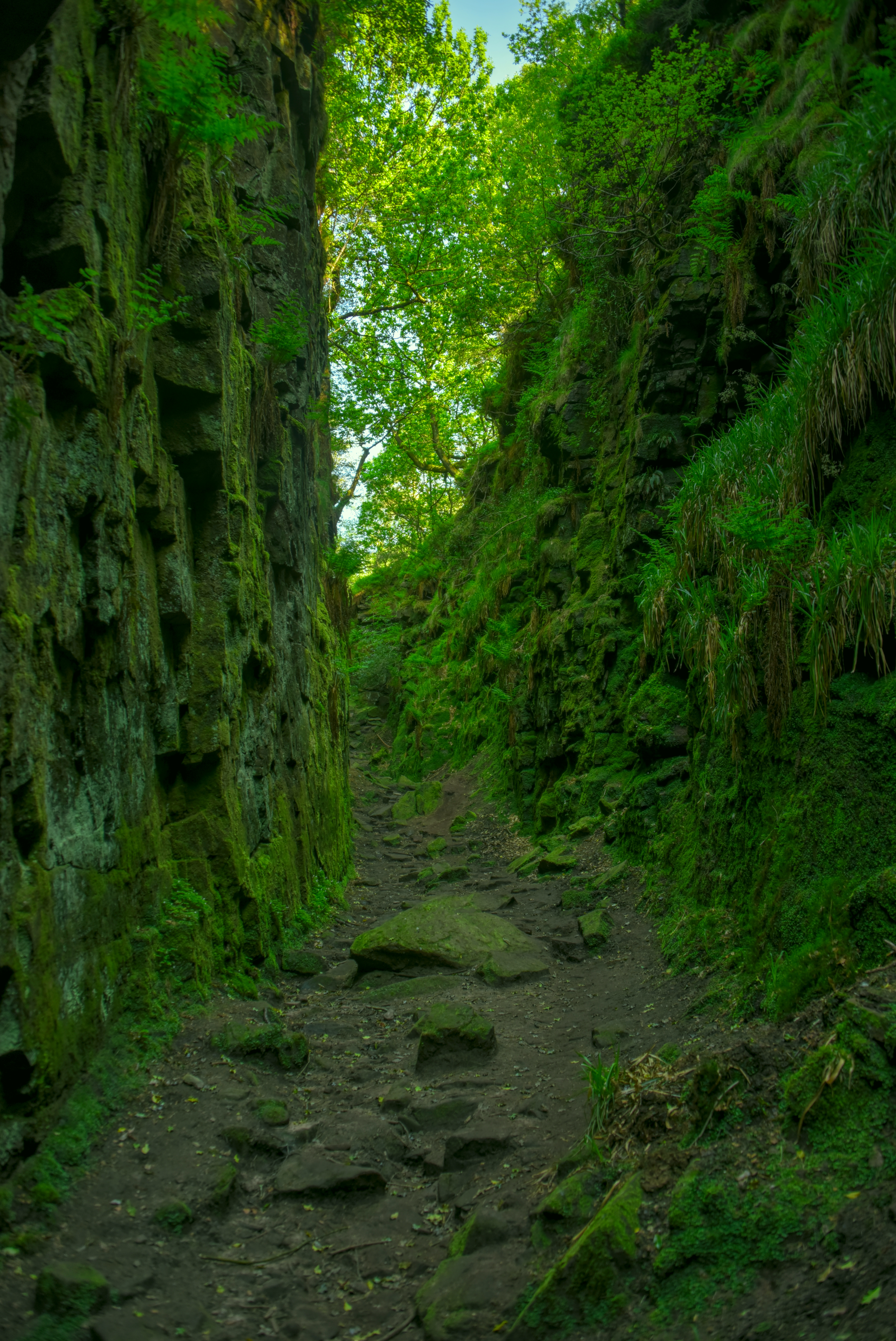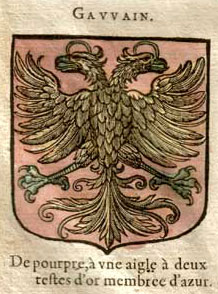|
Sir Gawain And The Green Knight
''Sir Gawain and the Green Knight'' is a late 14th-century chivalric romance in Middle English. The author is unknown; the title was given centuries later. It is one of the best-known Arthurian stories, with its plot combining two types of folk motifs: the beheading game, and the exchange of winnings. Written in stanzas of alliterative verse, each of which ends in a rhyming bob and wheel; it draws on Welsh, Irish, and English stories, as well as the French chivalric tradition. It is an important example of a chivalric romance, which typically involves a hero who goes on a quest which tests his prowess. It remains popular in modern English renderings from J. R. R. Tolkien, Simon Armitage, and others, as well as through film and stage adaptations. The story describes how Sir Gawain, a knight of King Arthur's Round Table, accepts a challenge from a mysterious "Green Knight" who dares any knight to strike him with his axe if he will take a return blow in a year and a day. Gawai ... [...More Info...] [...Related Items...] OR: [Wikipedia] [Google] [Baidu] |
Gawain Poet
The "Gawain Poet" (), or less commonly the "Pearl Poet",Andrew, M. "Theories of Authorship" (1997) in Brewer (ed). ''A Companion to the Gawain-poet'', Boydell & Brewer, p.23 (''fl.'' late 14th century) is the name given to the author of ''Sir Gawain and the Green Knight'', an alliterative poem written in 14th-century Middle English. Its author appears also to have written the poems ''Pearl'', ''Patience'', and ''Cleanness''; some scholars suggest the author may also have composed '' Saint Erkenwald''. Save for the last (found in BL-MS ''Harley 2250''), all these works are known from a single surviving manuscript, the British Library holding ''Cotton Nero A.x''. This body of work includes some of the most highly-regarded poetry written in Middle English. The Gawain Poet is unidentified. Various scholars have suggested that the poem is attributable to a member of the landed Massey family of Cheshire, and in particular John Massey of Cotton. This is not widely accepted, however, ... [...More Info...] [...Related Items...] OR: [Wikipedia] [Google] [Baidu] |
Alliterative Verse
In prosody, alliterative verse is a form of verse that uses alliteration as the principal ornamental device to help indicate the underlying metrical structure, as opposed to other devices such as rhyme. The most commonly studied traditions of alliterative verse are those found in the oldest literature of the Germanic languages, where scholars use the term 'alliterative poetry' rather broadly to indicate a tradition which not only shares alliteration as its primary ornament but also certain metrical characteristics. The Old English epic ''Beowulf'', as well as most other Old English poetry, the Old High German ''Muspilli'', the Old Saxon ''Heliand'', the Old Norse ''Poetic Edda'', and many Middle English poems such as ''Piers Plowman'', ''Sir Gawain and the Green Knight'', and the '' Alliterative Morte Arthur'' all use alliterative verse. While alliteration can be found in many poetic traditions, it is 'relatively infrequent' as a structured characteristic of poetic form.Frog, ... [...More Info...] [...Related Items...] OR: [Wikipedia] [Google] [Baidu] |
Welsh People
The Welsh ( cy, Cymry) are an ethnic group native to Wales. "Welsh people" applies to those who were born in Wales ( cy, Cymru) and to those who have Welsh ancestry, perceiving themselves or being perceived as sharing a cultural heritage and shared ancestral origins. Wales is the third-largest Countries of the United Kingdom, country of the United Kingdom of Great Britain and Northern Ireland. In the Acts of Union 1707, the Kingdom of England and the Kingdom of Scotland merged to become the Kingdom of Great Britain. The majority of people living in Wales are British nationality law, British citizens. In Wales, the Welsh language ( cy, Cymraeg) is protected by law. Welsh remains the predominant language in many parts of Wales, particularly in North Wales and parts of West Wales, though English is the predominant language in South Wales. The Welsh language is also taught in schools throughout Wales, and, even in regions of Wales in which Welsh people predominantly speak English ... [...More Info...] [...Related Items...] OR: [Wikipedia] [Google] [Baidu] |
Beheading Game
The beheading game is a literary trope found in Irish mythology and medieval chivalric romance. The trope consists of a stranger who arrives at a royal court and challenges a hero to an exchange of blows: the hero may decapitate the stranger, but the stranger may then inflict the same wound upon the hero. The supernatural nature of the stranger, which makes this possible, is only revealed when he retrieves his decapitated head. When the hero submits himself to the return blow, he is rewarded for his valor and is left with only a minor wound. The hero is seen as coming of age by undergoing the exchange of blows, and his symbolic death and rebirth is represented by the feigned return blow. Originating in the Irish legend of the ''Fled Bricrenn'', the beheading game appears in several Arthurian romances, most notably ''Sir Gawain and the Green Knight''. The beheading game has been analysed for its relationship with the Arthurian concept of chivalry. At no point does the Green Knigh ... [...More Info...] [...Related Items...] OR: [Wikipedia] [Google] [Baidu] |
Knights Of The Round Table
The Knights of the Round Table ( cy, Marchogion y Ford Gron, kw, Marghekyon an Moos Krenn, br, Marc'hegien an Daol Grenn) are the knights of the fellowship of King Arthur in the literary cycle of the Matter of Britain. First appearing in literature in the mid-12th century, the Knights are an order dedicated to ensuring the peace of Arthur's kingdom following an early warring period, entrusted in later years to undergo a mystical quest for the Holy Grail. The Round Table at which they meet is a symbol of the equality of its members, who range from sovereign royals to minor nobles. The various stories in the cycle present an assortment of knights from all over Great Britain and abroad, some of whom are even from outside of Europe. Their ranks often include King Arthur's family, Arthur's close and distant relatives, such as Agravain and Gaheris, as well as his reconciled enemies and those he defeated in battle, including Galehaut and King Lot, Lot. Several of the most notable kn ... [...More Info...] [...Related Items...] OR: [Wikipedia] [Google] [Baidu] |
King Arthur
King Arthur ( cy, Brenin Arthur, kw, Arthur Gernow, br, Roue Arzhur) is a legendary king of Britain, and a central figure in the medieval literary tradition known as the Matter of Britain. In the earliest traditions, Arthur appears as a leader of the post-Roman Britons in battles against Saxon invaders of Britain in the late 5th and early 6th centuries. He appears in two early medieval historical sources, the ''Annales Cambriae'' and the ''Historia Brittonum'', but these date to 300 years after he is supposed to have lived, and most historians who study the period do not consider him a historical figure.Tom Shippey, "So Much Smoke", ''review'' of , ''London Review of Books'', 40:24:23 (20 December 2018) His name also occurs in early Welsh poetic sources such as ''Y Gododdin''. The character developed through Welsh mythology, appearing either as a great warrior defending Britain from human and supernatural enemies or as a magical figure of folklore, sometimes associated wi ... [...More Info...] [...Related Items...] OR: [Wikipedia] [Google] [Baidu] |
Morgan Le Fay
Morgan le Fay (, meaning 'Morgan the Fairy'), alternatively known as Morgan[n]a, Morgain[a/e], Morg[a]ne, Morgant[e], Morge[i]n, and Morgue[in] among other names and spellings ( cy, Morgên y Dylwythen Deg, kw, Morgen an Spyrys), is a powerful and ambiguous Magician (fantasy), enchantress from the legend of King Arthur, in which most often she and he are siblings. Early appearances of Morgan in Arthurian literature do not elaborate her character beyond her role as a goddess, a fairy , fay, a Witchcraft , witch, or a sorceress, generally benevolent and connected to Arthur as his magical saviour and protector. Her prominence increased as legends developed over time, as did her moral ambivalence, and in some texts there is an evolutionary transformation of her to an antagonist, particularly as portrayed in cyclical prose such as the ''Lancelot-Grail'' and the Post-Vulgate Cycle. A significant aspect in many of Morgan's Middle Ages, medieval and later iterations is the unpredictab ... [...More Info...] [...Related Items...] OR: [Wikipedia] [Google] [Baidu] |
Lady Bertilak
Lady Bertilak (or Lady Hautdesert) are names given by some modern critics to a character in the medieval poem ''Sir Gawain and the Green Knight'' (14th century), though the poem itself only ever calls her "the lady". She is ordered by her husband, Sir Bertilak de Hautdesert, alias the Green Knight, to test Sir Gawain's purity. Analysis The lady of the house, Lady Hautdesert (whose actual name is never given in the poem), is one of the most prominent characters in the poem Sir Gawain and the Green Knight. In company, she always appears with a crone beside her (who later turns out to be Gawain's aunt, Morgan le Fay). The two women bracket feminine vulnerability and strength, in youth and age, and they are always together. The lord of the manor, Sir Bertilak de Hautdesert, insists that Gawain socialize freely and sit between the two women at their dinners, and Gawain finds them most hospitable. However, she comes alone to Gawain's chambers on three mornings in a row, each time in a m ... [...More Info...] [...Related Items...] OR: [Wikipedia] [Google] [Baidu] |
Green Knight
The Green Knight ( cy, Marchog Gwyrdd, kw, Marghek Gwyrdh, br, Marc'heg Gwer) is a character from the 14th-century Arthurian poem ''Sir Gawain and the Green Knight'' and the related medieval work ''The Greene Knight''. His true name is revealed to be Bertilak de Hautdesert (an alternative spelling in some translations is "Bercilak" or "Bernlak") in ''Sir Gawain'', while ''The Greene Knight'' names him "Bredbeddle". The Green Knight later features as one of Arthur's greatest champions in the fragmentary ballad "King Arthur and King Cornwall", again with the name "Bredbeddle". In ''Sir Gawain and the Green Knight'', Bertilak is transformed into the Green Knight by Morgan le Fay, a traditional adversary of King Arthur, in order to test his court. However, in ''The Greene Knight'', he is transformed by a different woman for the same purpose. In both stories, he sends his wife to seduce Gawain as a further test. "King Arthur and King Cornwall" portrays him as an exorcist and one ... [...More Info...] [...Related Items...] OR: [Wikipedia] [Google] [Baidu] |
Gawain
Gawain (), also known in many other forms and spellings, is a character in Arthurian legend, in which he is King Arthur's nephew and a Knight of the Round Table. The prototype of Gawain is mentioned under the name Gwalchmei in the earliest Welsh sources. He has subsequently appeared in many Arthurian stories in Welsh, Latin, French, English, Scottish, Dutch, German, Spanish, and Italian, notably as the protagonist of the famous Middle English poem ''Sir Gawain and the Green Knight''. Other tales featuring Gawain as the central character include '' De Ortu Waluuanii'', ''Diu Crône'', '' Ywain and Gawain'', '' Golagros and Gawane'', '' Sir Gawain and the Carle of Carlisle'', '' L'âtre périlleux'', '' La Mule sans frein'', '' La Vengeance Raguidel'', '' Le Chevalier à l'épée'', '' The Awntyrs off Arthure'', '' The Greene Knight'', and '' The Weddynge of Syr Gawen and Dame Ragnell''. In Arthurian chivalric romance literature, Gawain is usually depicted as King Arthur's clo ... [...More Info...] [...Related Items...] OR: [Wikipedia] [Google] [Baidu] |
Peak District
The Peak District is an upland area in England at the southern end of the Pennines. Mostly in Derbyshire Derbyshire ( ) is a ceremonial county in the East Midlands, England. It includes much of the Peak District National Park, the southern end of the Pennine range of hills and part of the National Forest. It borders Greater Manchester to the nor ..., it extends into Cheshire, Greater Manchester, Staffordshire, West Yorkshire and South Yorkshire. It includes the Dark Peak, where moorland is found and the geology is dominated by gritstone, and the White Peak, a limestone area with valleys and gorges. The Dark Peak forms an arc on the north, east and west sides; the White Peak covers central and southern tracts. The historic Peak District extends beyond the National Park, which excludes major towns, quarries and industrial areas. It became the first of the national parks of England and Wales in 1951. Nearby Manchester, Stoke-on-Trent, Derby and Sheffield send millions of v ... [...More Info...] [...Related Items...] OR: [Wikipedia] [Google] [Baidu] |
West Midlands (region)
The West Midlands is one of nine official regions of England at the ITL 1 statistical regions of England, first level of International Territorial Level for Statistics, statistical purposes. It covers the western half of the area traditionally known as the Midlands (England), Midlands. The region consists of the ceremonial counties of england, counties of Herefordshire, Shropshire, Staffordshire, Warwickshire, West Midlands (county), West Midlands and Worcestershire. The region has seven cities; Birmingham, Coventry, Hereford, Lichfield, Stoke-on-Trent, Wolverhampton and Worcester, England, Worcester. The West Midlands region is geographically diverse, from the urban central areas of the West Midlands conurbation to the rural counties of Herefordshire, Shropshire and Worcestershire which border Wales. The region is landlocked. However, the longest river in the UK, the River Severn, traverses the region southeastwards, flowing through the county towns of Shrewsbury and Worc ... [...More Info...] [...Related Items...] OR: [Wikipedia] [Google] [Baidu] |











